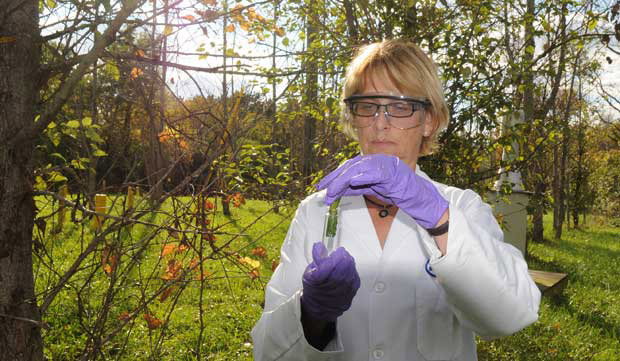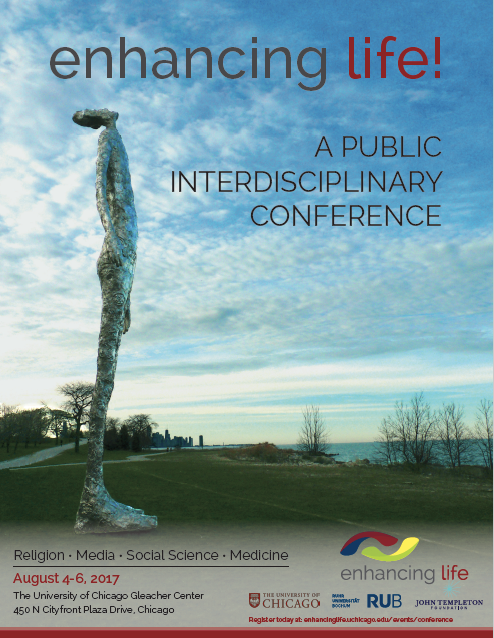The Chicago of the beginning of the last century was a noxious, polluted metropolis described by the poet Carl Sandburg as the “hog butcher for the world.” At the beginning of the new century, however, a group of scientists have undertaken an effort to transform the city’s industrial past into an environmentally sustainable future.
One of these scientists, Cristina Negri, Argonne National Laboratory agronomist and senior fellow of the University of Chicago’s Energy Policy Institute, has spent much of her career looking at how plants can restore polluted soils and waterways over time. Working in collaboration with Argonne, UChicago, and recently with a professor Ehud Meron of Israel’s Ben Gurion University, Negri is examining several ways to make urban environments safer, healthier, and more enjoyable.
Q: What kinds of projects are you working on?
A: I’m working on two projects right now with two local public agencies – a small one and a bigger one. The smaller one involves a site called Big Marsh, which is run by the Chicago Park District and located adjacent to Lake Calumet at the border of Illinois and northwestern Indiana.
Historically, the area surrounding Big Marsh was home to a mix of urban and industrial development. One of the region’s largest collections of steel mills operated there for many decades, and as you might expect they produced a great deal of contamination. Slag, which is a metallic byproduct from the smelting process, is found as fill in many places in this area. Although these plants were shut down years ago, the large quantities of slag and other pollutants that infiltrated the soil still impact the environment.
The goal of this particular project is to revegetate the land using native plants to restore Big Marsh to a fully green space in a process that we call “phytoremediation.” Big Marsh is a relatively small site – it’s only about 90 acres – so we’re really looking at this as a case study to see how well the plants do cleaning up the site. We hope to use the lessons we learn and apply them eventually to a significant part of the Calumet Millennium Reserve, which contains more than 140,000 acres of land in need of restoration.
Q: And the second, larger project?
A: I’ve just put in a proposal with another Argonne scientist, Jack Gilbert, to try to identify and estimate the number of different microorganisms in Chicago area waterways in order to figure out where they all come from. Jack’s specialty is in a field called “metagenomics,” in which he basically overcomes limitations imposed by traditional culturing methods and collects all the DNA present in a sample, breaks it down, and then recombines it in order to determine which species are represented.
In this project, we’re working with Chicago’s Metropolitan Water Reclamation District. Recently, the EPA announced new water quality criteria to make the Chicago River and several other Chicago-area waterways into swimmable environments, and so the people in charge of the water quality want to know where they should be investing their resources most efficiently.
Our project can help them make decisions because we believe we will be able to say, for example, that most of the contamination comes from runoff, or from sediment resuspended by boats, by combined sewer overflows or from migratory birds. Identifying the most urgent problems will help us and the city to focus our solutions.
Q: Do you have any potential solutions in mind?
A: Obviously, we still need to do a lot of the research, but one idea I find particularly interesting involves planting what I call a “green buffer” along the banks of the Chicago River and connected with other green infrastructure in the city. In many parts of the city, the areas immediately along the riverbanks are still highly industrial and not exceptionally green, making them particularly likely contributors to water quality issues in the waterways. If we were to do some large-scale, engineering-driven planting along the riverbanks, we could not only address a likely source of pollution but we could dramatically improve the aesthetic and functional appeal of one of the city’s great resources. It’s no mere gardening job – it needs to be driven by strategic engineering.
Q: How do the different resources provided by the University and Argonne enable you to do your research?
A: The advantage of the University of Chicago is that it offers me the opportunity to expand my sponsor base and to partner with scientists in disciplines that are not represented at Argonne, such as social scientists, policy experts, economists and others. The University is good at targeting different sponsors than those usually funding Argonne’s research.
The University’s research development group, Arete, has helped me by facilitating the connection between my ideas and sponsor’s needs and facilitated my connection with other researchers who have expertise outside of my usual network, but could be complementary for specific projects. It has also provided me with the structural support of proposal organizing, proofing and checking so that I could spend my time refining ideas and scientific approach.
However, the kind of technical expertise that Argonne provides for multidisciplinary research creates the potential for a whole variety of research that cuts across many fields in order to solve important urban challenges.
Q: I know this spring you went to Israel and met with researchers at Ben Gurion University. Has anything come out of those budding collaborations?
A: Actually, yes! One of the professors at Ben Gurion has done a lot of research on how plants organize themselves during drought conditions. His research looks at how desert plants’ root systems assemble in order to make the most efficient use of the available water in the environment. What we’re trying to do together is to create what we call a “biomimetic” system – a human-generated design that mimics a natural pattern. A proposal was just submitted for this work.
Now, one might not typically immediately associate an urban environment like Chicago with a desert, but there is one area in particular in which this kind of research might yield immediate benefits: green roofs. The plants located on green rooftops typically can see tremendous rainfall in a very short period but typically don’t get much for extended lengths of time.
The City of Chicago has the largest acreage of green roofs of any city in the U.S., and we would like to work with the city to develop and validate a model that might help us plan and design new roofs in the future, creating an even more desirable and sustainable urban landscape.
By Jared Sagoff




